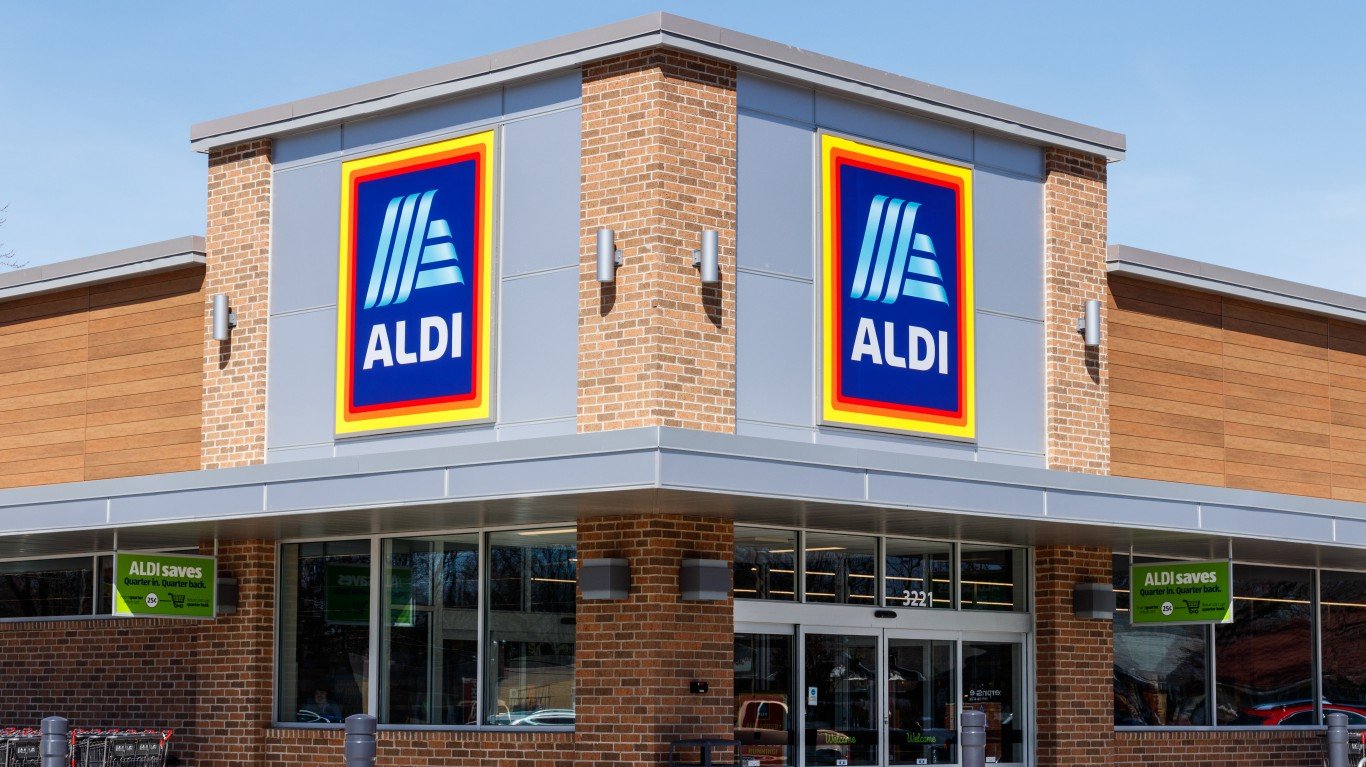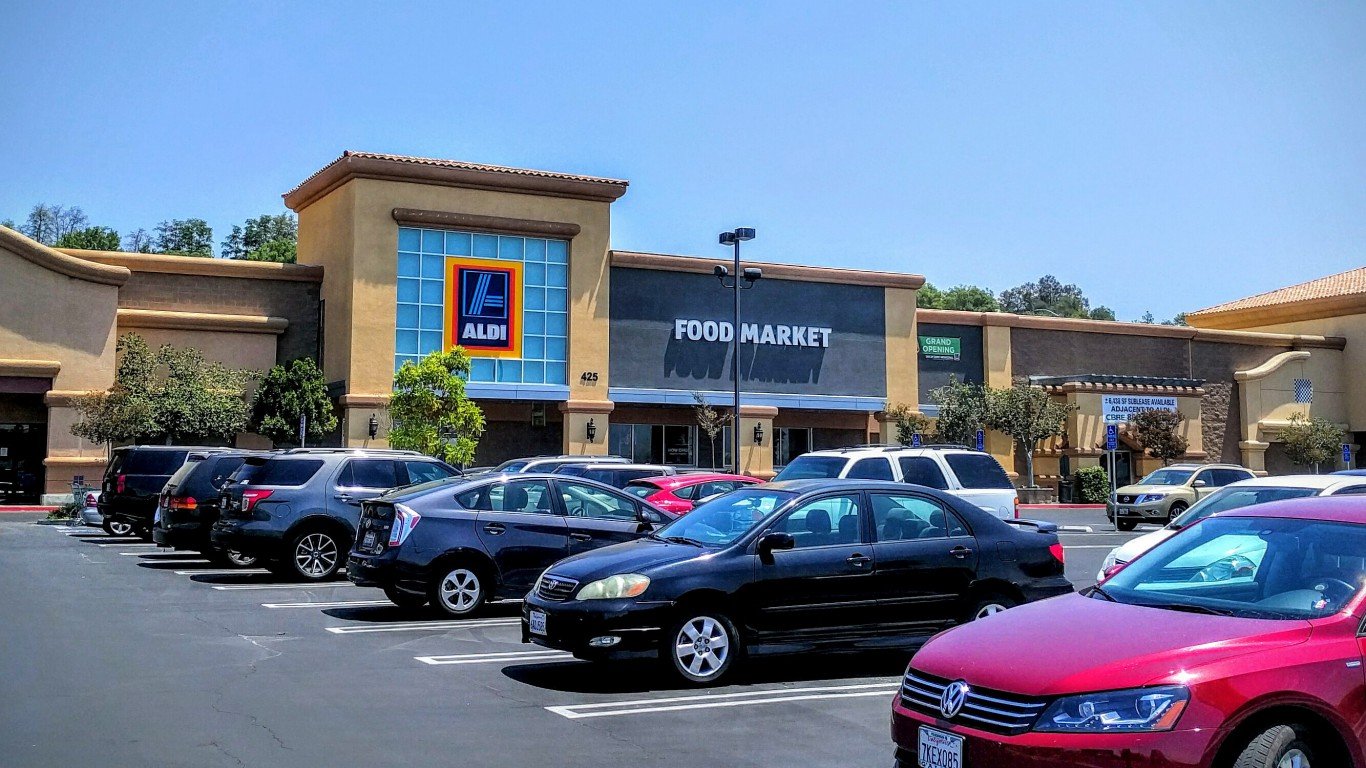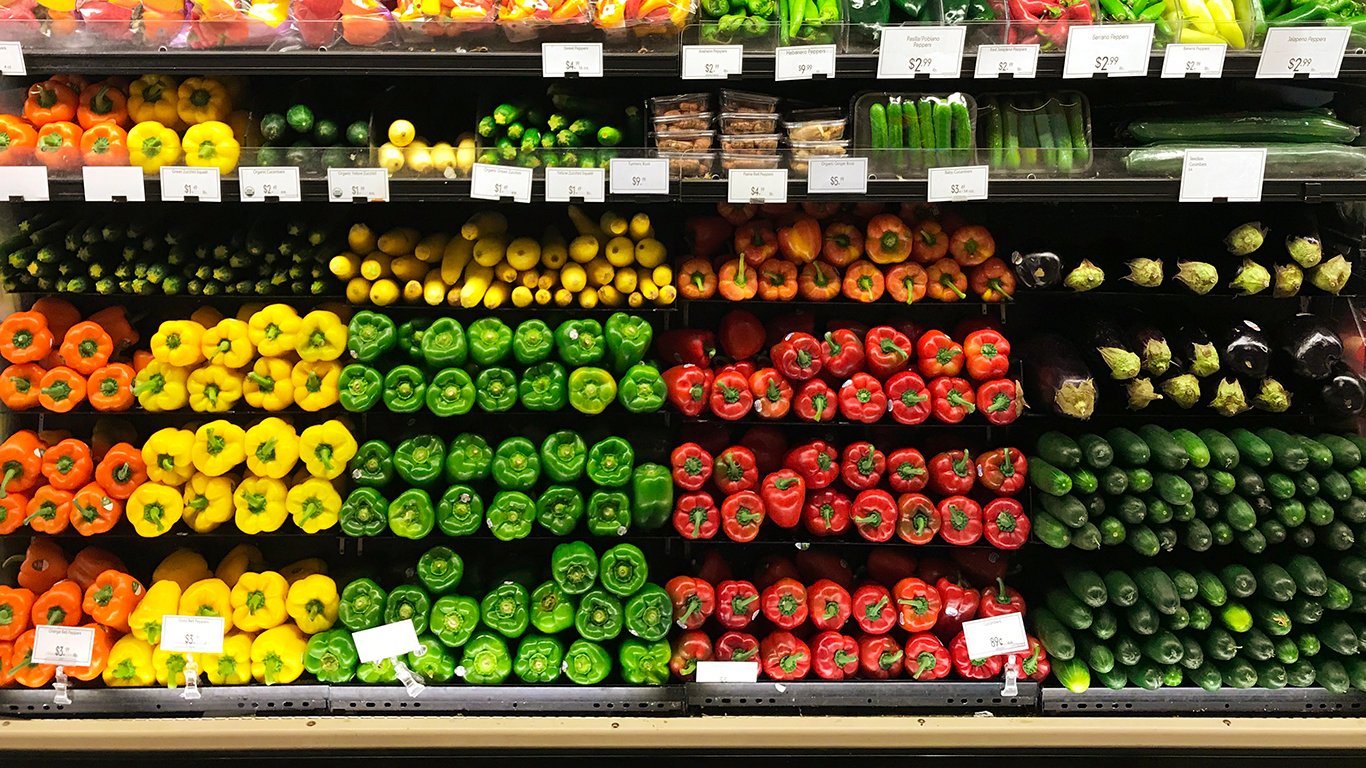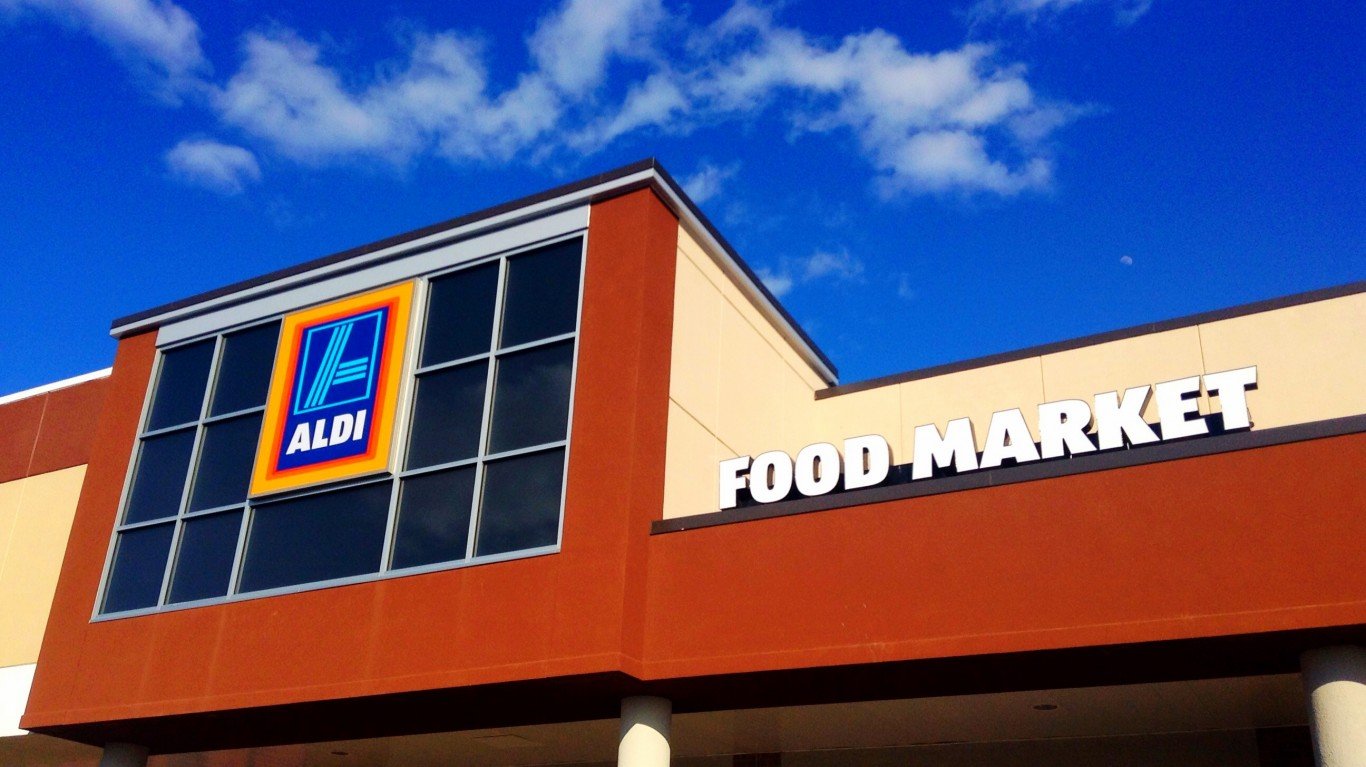

It’s a battle of German supermarket superiority. Aldi’s vs. Lidl is one of the most notable rivalries across grocery chains, and both chains have a long and somewhat intertwined history. Both chains originate in Germany and offer similar approaches to the supermarket experience: low prices, quality goods, usually via private label brands, and lower selections when compared to traditional supermarkets. In many ways, Aldi and Lidl are more similar than they are different, but they aren’t identical. Today, we will look at these two grocery chains and discover what makes them different, plus which ones shoppers prefer.
To compile our list, 24/7 used online shopping forums discussing differences and preferences, plus other articles that have done research on some of the notable differences between the two companies. Ultimately, things like “preference” will come down to individual opinions, but there does seem to be some consensus online regarding many of the items that follow.
1. Lidl Locations Are Generally Larger

According to Today, one of the major differences between the two stores doesn’t have to do with their products, but in how they go about building locations. Lidl is generally larger in terms of square footage, averaging between 13,000 and 21,000 square feet, while Aldi’s is usually around 10,000 per store.
This does impact shopper experience a bit (bigger locations can feel more premium or grandiose), but the more important thing is that this allows Lidl to offer more product variation. The footprint of a store also impacts the speed of expansion, which may be one of the reasons that Aldi has such an advantage when it comes to the number of locations around the country.
2. Aldi Focuses on Private Label, Lidl Offers More Brand Name
To be clear, both Lidl and Aldi are known to have extensive private-label offerings, so this difference is relative to this specific comparison. These private labels are really what make these companies tick, and the quality of them helps to secure the brand image of these grocery chains as inexpensive but still great for shoppers. Together, that ultimately means value.
When comparing them directly, however, there are a few key differences in how they approach private labels. The biggest difference is in the sheer quantity of goods. Aldi almost always offers a private label version of products, with select products being branded (Diet Coke, for example). Lidl also offers a lot of private label, but they are a little more lenient when it comes to allowing certain brand-name products in the store. This is likely because of the space provided by the larger stores, but it’s also a clear difference that impacts what is available when comparing the two.
3. Aldi Has More Locations Nationally

In terms of number of store locations, Aldi’s has the lead by a substantial margin. This impacts availability quite drastically, and does establish Aldi’s as a larger company here in the United States. Currently, Lidl has around 170 stores nationally, with around 12,000 around the world. Aldi has over 2,200 locations nationally, with 12,000 similar stores worldwide, although they aren’t all under the same brand name.
As a result, most people in the United States have some brand recognition when it comes to Aldi’s, but Lidl still lags behind.
4. Aldi’s Requires Quarters for Carts

One of the most famous things about Aldi’s is the need for quarters to grab a cart. Unlike traditional supermarkets, Aldi shoppers need to deposit a quarter to unlock a cart, a measure to ensure that carts are returned to their designated spots after use.
While it may seem silly to customers, the approach does have a few benefits. First, it helps with cart organization since most people prefer to get their quarter back instead of leaving it out. Second, it reflects Aldi’s commitment to efficiency and cost-cutting. Essentially, this reduces the need to have more staff to help with carts, one of the most common jobs in traditional supermarkets in the United States.
While the quarter is returned upon cart return; it adds an interesting twist to the shopping routine and serves as a distinctive feature that regular Aldi shoppers are accustomed to.
5. Lidl Has Larger Produce Sections

Generally speaking, Lidl has a much larger produce section than Aldi’s does. This is likely tied to the store size, but it also is just a philosophical difference in how each brand approaches groceries. Aldi’s will always have the most commonly requested items and pantry staples, but when you need something a little more austere or unique, Lidl is more likely to carry it with regularity.
6. Lidl’s Bakery is Renowned

For one of the most “subjective” items on the list, let’s look at the Lidl bakery. In much of the online discourse surrounding Lidl, a lot of it is centered around the quality, availability, and freshness of its bakery. Organic and fresh-made breads, fresh sweets, and more are present at every Lidl location, while Aldi’s doesn’t really have a fresh bakery to the extent that Lidl does.
7. The Checkout Process Is Different At Both

Transitioning from the aisles to the checkout, there are again some minor differences between the stores.
Aldi, known for its efficiency, has a less traditional approach. Here, customers are expected to bag their own groceries as the attendant scans items. Plus, the attendant is usually seated, something uncommon in most grocery stores.
Conversely, Lidl’s checkout experience may lean towards a more traditional approach. With a larger store layout, there is more space for traditional conveyor belt setups and dedicated bagging areas.
8. Home Delivery Methods

When it comes to the convenience of home delivery, Aldi and Lidl take different routes. Notably, Aldi has embraced Instacart as its primary home delivery partner, while Lidl uses Shipt for home delivery.
This choice introduces a different dynamic for consumers, as the availability and accessibility of Instacart versus Shipt can vary based on location. If one of these services is more prevalent or user-friendly in a particular area, it could significantly influence how easily customers can access the home delivery options provided by these grocery chains.
Which Do People Prefer?
In the dynamic rivalry between Aldi and Lidl, a subjective online consensus appears to tip the scales slightly in Lidl’s favor. Numerous discussions and insights from various online platforms indicate that a significant portion of shoppers express a preference for Lidl over Aldi, citing several factors.
- Product Selection: Lidl’s larger store size allows for a more extensive and varied product selection, catering to diverse consumer preferences. The availability of both private-label and brand-name beats out Aldi’s singular focus on private-label.
- Comparable Prices: Both Aldi and Lidl are known for their commitment to low prices and are seen as “value-centric” online. The consensus online suggests that Lidl manages to maintain this affordability while offering an enhanced selection, edging ahead here.
- Store Feeling (Size and Design): Lidl’s larger store footprint provides a more spacious and visually appealing shopping environment. Shoppers appreciate the combination of affordability and a traditional supermarket feel, which contributes to an overall pleasant in-store experience.
- Bakery Excellence: Lidl’s bakery section is a notable consumer highlight. It’s hard to look for feedback online without people mentioning the bakery.
It’s important to note that individual preferences play a significant role, and the ultimate choice between Aldi and Lidl will depend on things like location, specific product preferences, and the importance placed on certain aspects of the shopping experience. German supermarket supremacy isn’t settled, but it seems that Lidl has an edge in many markets in the United States.
Sponsored: Want to Retire Early? Start Here
Want retirement to come a few years earlier than you’d planned? Orare you ready to retire now, but want an extra set of eyes on your finances?
Now you can speak with up to 3 financial experts in your area for FREE. By simply clicking here you can begin to match with financial professionals who can help you build your plan to retire early. And the best part? The first conversation with them is free.
Click here to match with up to 3 financial pros who would be excited to help you make financial decisions.
Thank you for reading! Have some feedback for us?
Contact the 24/7 Wall St. editorial team.




